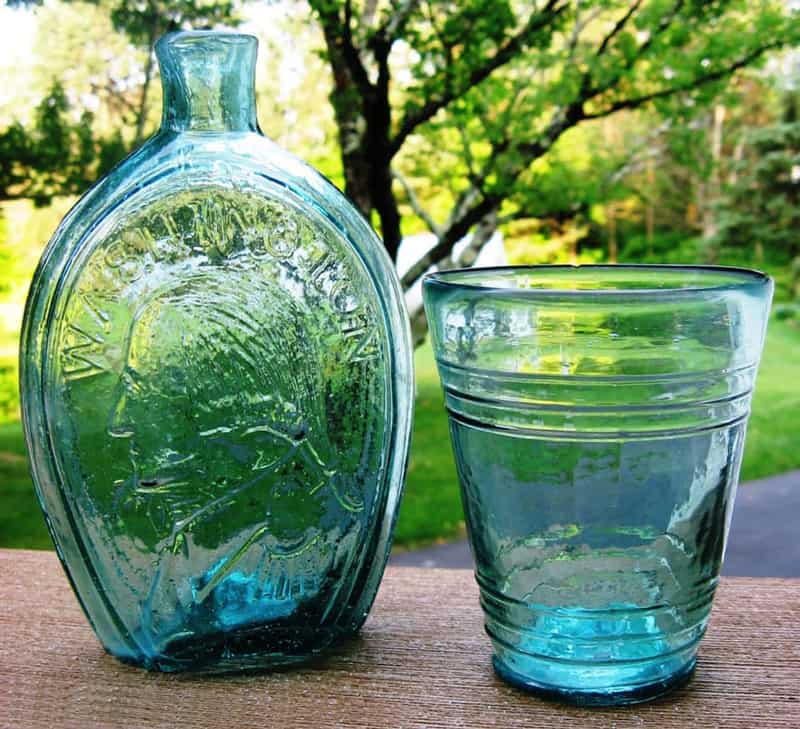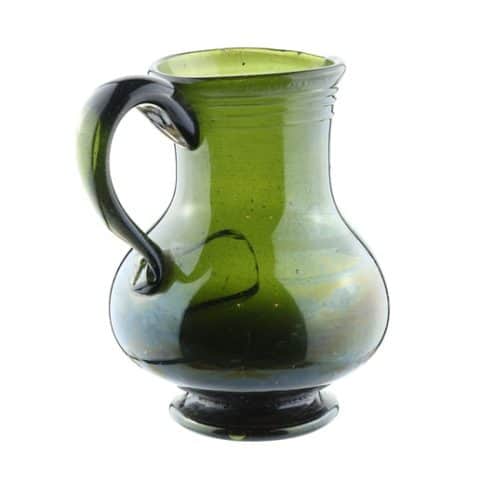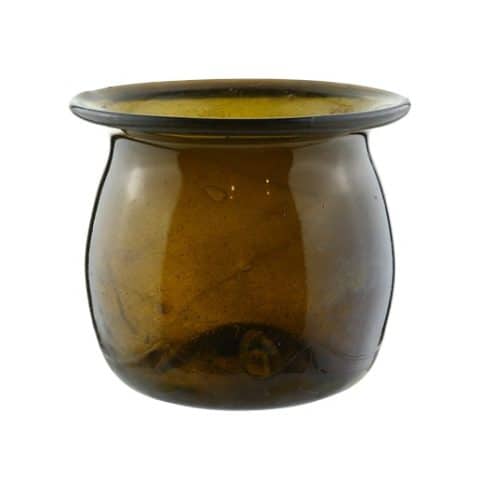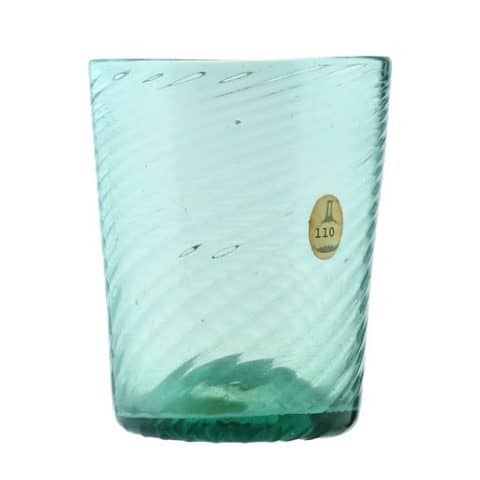Coventry Tumbler
Coventry Tumbler
Early American Tableware
Attributed to Coventry Glass Works, Coventry, Connecticut
Aquamarine
Provenance: Richard S. Ciralli Collection

We feature this excellent aquamarine, mold-blown tableware tumbler with a straight-sided body tapering to the base with a rough pontil mark. The 4 1/2 inch tall by 3 1/2 inch rim diameter drinking glass was blown in a two-piece mold. There are three raised and spaced-out rings near the top of the tumbler and three rings near the base.

The tumbler is attributed to Coventry Glass Works in Coventry, Connecticut, and was acquired from an old-time New England collection. The piece is in excellent condition and considered extremely rare with several examples known. The glass is similar to the rare GI-32 “Washington” and Bust – “Jackson” and bust portrait flask, also attributed to Coventry. The tumbler is pictured in New England Glass and Glassmaking by Kenneth M. Wilson, 1972.
See the Museum example GI-32 “Washington” and Bust – “Jackson” and Bust portrait flask.

See the Museum example of a Zanesville Pattern Molded Tumbler.
See the Museum example of a Coventry Glob Decanter.
Coventry Glass Works
Seven men agreed to erect a glass factory in Coventry, Connecticut, on January 14, 1813, along the Willimantic River. Four men, Captain Nathaniel Root, Ebenezer Root Nathaniel Root Jr., and Joseph A. Norton, all Coventry, were not glassmakers. The other three included Eli Evans, Thomas W. Bishop, and Uriah Andrews, glassblowers from East Hartford who had the experience running the day-to-day operations. Eli, Thomas, and Uriah were to use their expertise where needed in the glass factory and be compensated at $26 per month and $45 for each year they worked in the plant.
In 1816, there was an agreement to expand by adding buildings. Thomas Stubbins was operating the glassworks by 1820. Lafayette flasks having embossed “T.S.” were made sometime around 1825. The brother of Thomas may have entered the business sometime in 1825. The “S.S.” on some Lafayette flasks could be the entry of a brother to the glassworks or possibly a mistake. Later in 1825, Rufus B. Chamberlain joined the firm and they were now Stebbins & Chamberlin. The “S & C” is found on some flasks. In 1828, Jasper Gilbert, John Turner, and Rufus B. Chamberlain with John Turner’s brother Levi took control forming Gilbert Turner & Company. Lack of wood is said to be the reason for the glassworks closing in 1848, but accounting books seem to indicate sales into 1849.
Primary Image: The Coventry Tumbler imaged on location by Alan DeMaison, FOHBC Virtual Museum Midwest Studio
Support: Reference to American Glass by George S. and Helen McKearin, Crown Publishers Inc., New York, 1989.
Support: Reference to American Bottles and Flasks and Their Ancestry by Helen McKearin and Kenneth M. Wilson, Crown Publishers, New York, 1978.
Support Image: Museum example GI-32 “Washington” and Bust – “Jackson” and Bust portrait flask and related Tumbler exterior picture provided by Rick Ciralli.
Join the FOHBC: The Virtual Museum is a project of the Federation of Historical Bottle Collectors (FOHBC). To become a member.

























